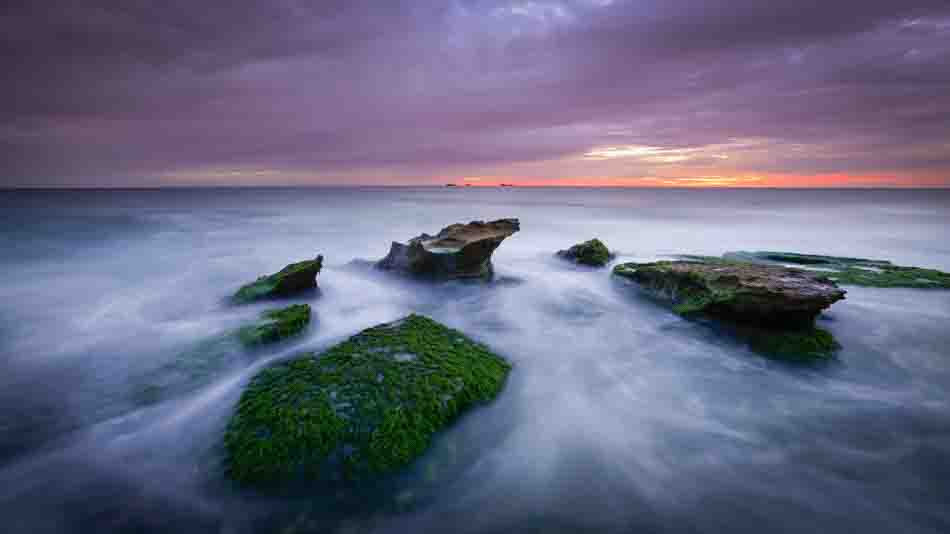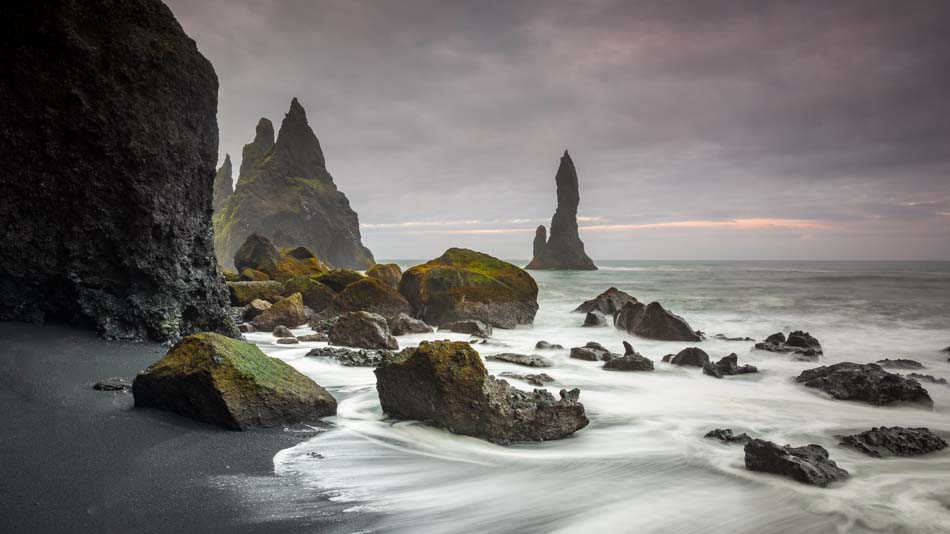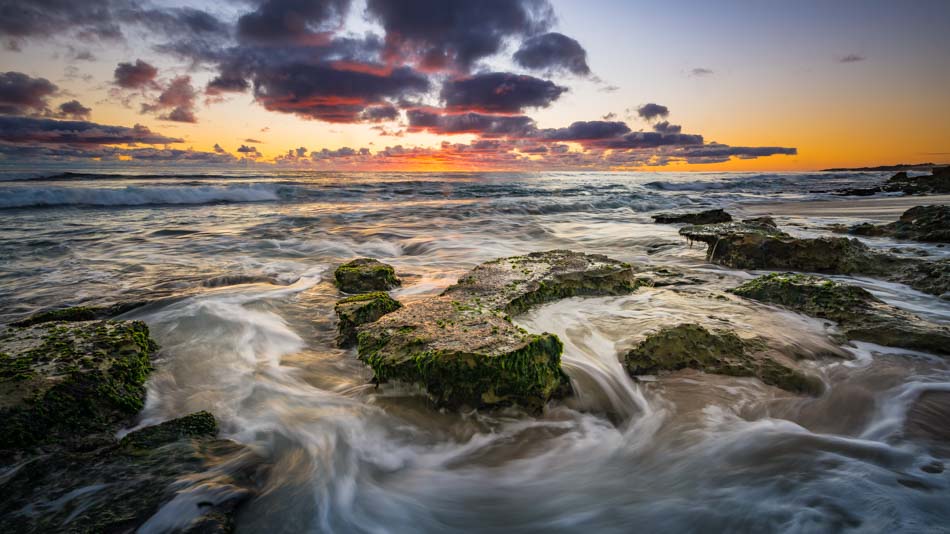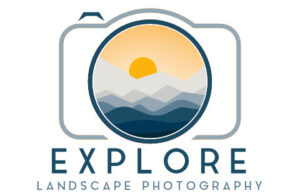The coast offers endless possibilities for compositions and dynamic scenes to photograph. That’s why I enjoy visiting the beach with my camera.
But with so much to capture, knowing what the best Aperture to use can be challenging.
For seascape photos, you should maximize your Depth of Field (DoF) using an Aperture between f/11 to f/16 to have the entire scene in focus. An Aperture below this range will provide a DoF that may not include some elements resulting in a portion of the scene being out of focus.
Like Shutter Speed, the Aperture you select impacts the exposure as well as other aspects of the image.
There’s a bit to consider when determining what Aperture to use for the best results.
What is Aperture in Photography?
Essentially, the aperture is the hole or diaphragm in the lens through which light passes as it travels to the camera.
The Aperture setting in photography is how much the lens opens when the camera takes an image.

A wide Aperture like f/1.8 allows more light to pass through the lens to the camera’s sensor, which can be helpful when shooting seascapes in relatively low light around sunset or sunrise.
An Aperture of a lower f/stop like f/20 is a small opening, so less light can travel through to the camera.
How Does Aperture Impact an Image?

Aperture Controls the Amount of Light
The value you set for the aperture to will affect how much light can reach the sensor.
Along with ISO and Shutter Speed, Aperture is one of three adjustments photographers use to control the photo’s exposure.

Aperture Control the Depth of Field
The Aperture determines the Depth of Field that’s set for a photo.
A large aperture (smaller f/stop, like f/1.4 or f/2.8), while allowing more light through, will provide a small Depth of Field (DoF), so elements in the scene will be out of focus and blurred.
A smaller aperture with a higher f/stop, like f/18 or f/22, will give the image a large DoF ensuring all elements in the frame are in focus, but that can introduce other issues.
Aperture Adds Diffraction
Diffraction occurs when light passes through a small opening. For small apertures, the path of the light bends.
The result of the diffraction is slightly softer details in the captured image.
Diffraction is a physics property of light and not a lens malfunction. Therefore, all lenses will produce diffraction at small Apertures, even expensive lenses.

The only way to minimize diffraction is to ensure your aperture is not too small.
Apertures higher than f/16 introduce noticeable diffraction in a photo.
What Depth of Field is Needed for Seascapes?
Having a portion of a picture out of focus using a small DoF can be impactful when you want all of the viewer’s attention on the main subject and the background blurred.
While perfect for portrait photos, landscape photographers don’t usually want this blurred-out background effect in a seascape image.
It is far more engaging to the viewer when every element included in the seascape photo is in focus.
Two factors that encourage the viewer to explore an image further are a strong composition and every element in the photo in focus.
When someone looks at a seascape image, they can get absorbed in the photo by exploring the details captured within the scene. Two factors that encourage the viewer to explore an image further are a strong composition and every element in the photo in focus.
What is the Ideal Aperture for Seascapes?
The best aperture for a seascape is above f/11 to ensure a large enough Depth of Field to include the entire scene but below f/16 to avoid adding diffraction to the image.
Monitor how the exposure is affected and compensate accordingly with the Shutter Speed or ISO.

How to Determine the Proper Aperture for a Seascape Scene?
After I’ve composed a seascape, I turn my attention to how I want to set the image’s exposure.
I’ll gauge the Depth of Field required by looking through the EVF or rear screen to see what elements are included in my frame and judge how far they are away from the camera by looking at the scene.
I start the aperture at about f/13, but if there are objects close to the camera, within a few feet, I’ll increase the Depth of Field by reducing the aperture closer to the f/14 to f/16 range.
Providing a Depth of Field that exceeds that required by the scene doesn’t make the image sharper.
There is no advantage in making the aperture any smaller than it needs to be. Providing a Depth of Field that exceeds that required by the scene doesn’t make the image sharper. Instead, it potentially does the opposite by introducing diffraction and making the detail across the photo softer.
With the ISO set to the base ISO of the camera for the cleanest possible image, I’ll dial in a shutter speed to the value needed for the effect I’m trying to create in the seascape.
If there is moving water in the seascape, I’ll often start with a shutter speed of around 1/3 of a second to capture motion blur and add interest in the foreground of the picture.
The next step is to check the histogram on the camera. If the image is overexposed, I’ll look at reducing the aperture by an f/stop or two.
From this point, it’s a compromise between the Aperture, ISO and Shutter Speed. Balancing the control over the amount of light and the other impacts these adjustments have on the image.
Once the exposure is set correctly, I focus the camera using Back Button Focus before taking the shot.
I then view the image I’ve just taken on the back of the camera and look at different parts of the photos to check they are sharp and in focus.
If required, I make appropriate adjustments and retake the shot.
How to Use the Aperture to Create a Sunburst Effect
When setting my aperture, I’m trying to capture the sharpest image by maximizing my Depth of Field while avoiding the introduction of diffraction into the picture.
One exception to this rule is when you want to create a sunburst effect in the image.
To create a sunburst, you need the sun, or any other substantial light source, included in the frame and reduce the aperture to a very narrow size, f/22.
The created effect is these lines that permeate from the point of light.

Having an aperture this small will mean some diffraction in the photo. However, the sunburst it generates is impressive and can often be a feature in the picture.
Plus, with a strong light source like the sun in the frame, the scene is generally backlit, and you may encounter lens flare and haze, which will soften your image anyway.
So you are probably not going to notice the effect of diffraction.
QUICK RECAP
Aperture is one of the three ways to control the exposure of an image.
Aperture also determines the Depth of Field for the scene.
Set an Aperture with a Depth of Field (DoF) so every element in the seascape from the foreground right the way through to the background is in focus.
Select an Aperture between f/11 and f/16 for seascape scenes to maximize the DoF.
If the foreground elements are close to the camera, lean towards the smaller end of that Aperture range.
